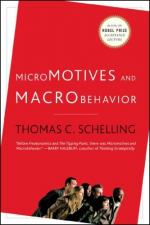
|
| Name: _________________________ | Period: ___________________ |
This test consists of 5 multiple choice questions and 5 short answer questions.
Multiple Choice Questions
1. Who was the American president who ordered the bomb to be dropped?
(a) Roosevelt.
(b) Eisenhower.
(c) Truman.
(d) Kennedy.
2. What was the status of nuclear weapons under Truman's successor?
(a) They were classified as weapons of mass destruction (WMD).
(b) They were heavily regulated.
(c) They became conventional weapons.
(d) They were banned.
3. What does Schelling say the simplest model of a closed system with a density enhancement contains?
(a) Population numbers and historical date.
(b) Micropopulation numbers and statistical projections.
(c) Population numbers and individual preferences.
(d) Future forecasting predictions.
4. How many distinct eggs does Schelling say a woman can produce?
(a) 1 million.
(b) 8 million.
(c) 180,000.
(d) 4 million.
5. What does Schelling say might be a demographic consequence of parents choosing their children's traits?
(a) Left-handedness might disappear.
(b) Median longevity might increase.
(c) Median size might increase.
(d) Median IQ might increase.
Short Answer Questions
1. What does Schelling say might disappear if parents had the ability to choose their children's traits?
2. How hockey players feel when the league makes helmets mandatory, in Schelling's analysis?
3. How many distinct sperm does Schelling say a man can produce?
4. What is a binary choice?
5. What does Schelling celebrate in the beginning of the final chapter of Micromotives and Macrobehavior?
|
This section contains 243 words (approx. 1 page at 300 words per page) |

|




